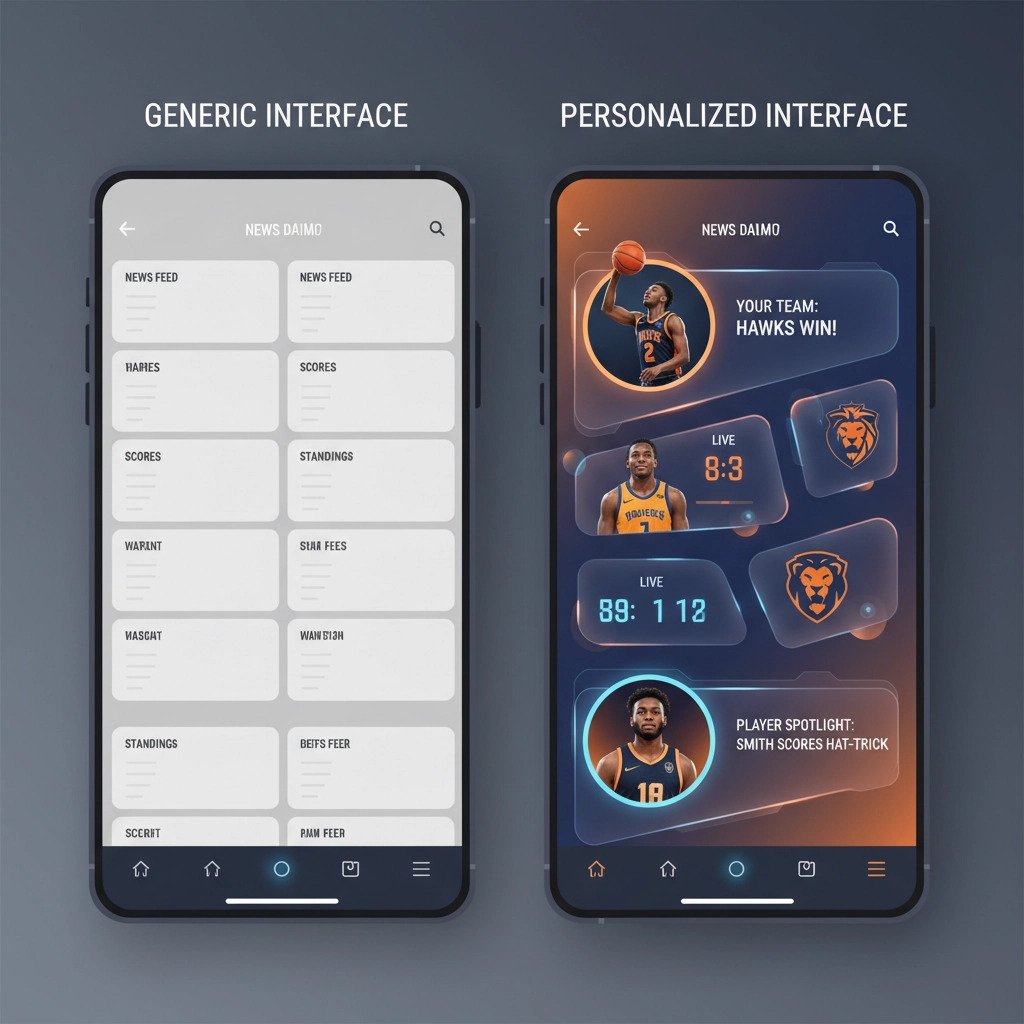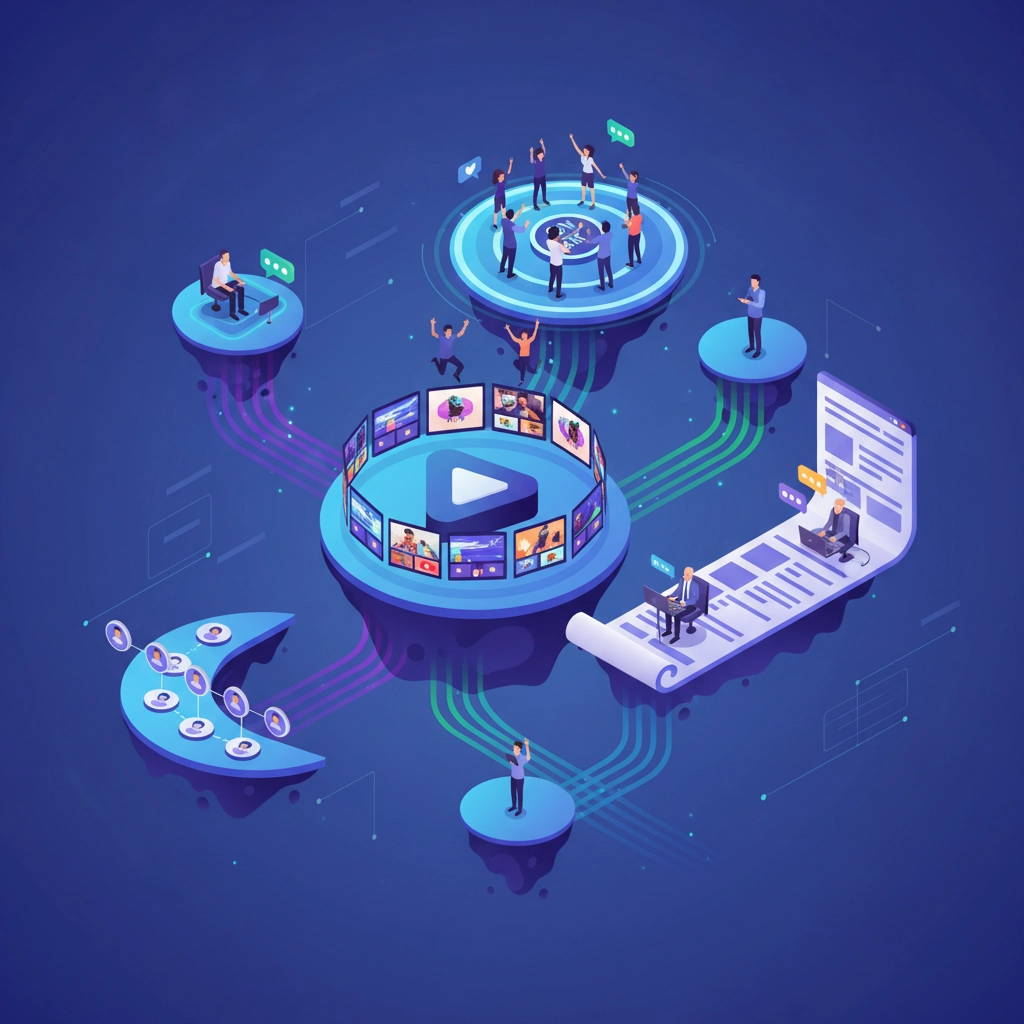Sports content creators consistently face the challenge of maintaining audience engagement across multiple platforms and demographics. Generic content approaches fail to generate meaningful interaction between fans and brands. The following seven strategies represent documented methods for improving fan engagement metrics through targeted content development and platform optimization.
1. Implement Gamification Through Achievement Systems
Gamification transforms passive content consumption into active participation. Sports platforms implementing leaderboard systems and digital achievement badges report increased user retention rates. The gamification market projects growth exceeding $78 billion by 2030, indicating widespread adoption across entertainment sectors.
Achievement systems function through point allocation for specific user actions. Fans receive recognition for content sharing, comment participation, and consistent platform engagement. Leaderboard displays create competitive elements that encourage regular interaction with posted content.

Digital badges serve as visual representations of user accomplishments. Sports organizations utilizing badge systems observe extended session durations and increased frequency of user visits. The implementation requires minimal technical infrastructure while generating measurable engagement improvements.
2. Prioritize User-Generated Content Integration
User-generated content reduces production costs while increasing authenticity metrics. Fans submit photographs, videos, and written content related to sporting events and team activities. This approach distributes content creation responsibilities across the user base rather than centralizing production within organizational structures.
Fan-submitted content generates higher engagement rates compared to professionally produced materials. Users demonstrate increased interaction with content created by fellow fans versus corporate messaging. The strategy requires content moderation systems to maintain quality standards and brand alignment.
Sports organizations request specific content types through targeted campaigns. Users respond to prompts for game-day experiences, player interactions, and stadium atmospheres. The resulting content library provides diverse material for ongoing platform maintenance and promotional activities.
3. Deploy Personalization Technologies
Personalized content delivery systems utilize user data to customize individual experiences. Sports platforms analyze viewing patterns, team preferences, and interaction history to generate targeted content recommendations. This approach eliminates irrelevant content exposure while maximizing engagement potential for specific user segments.
Customization extends to notification systems and alert preferences. Users receive updates concerning preferred teams, players, and game schedules. The personalized approach eliminates generic broadcast messaging in favor of individually relevant information delivery.

Data collection enables segmentation of user bases according to demographic and behavioral characteristics. Content creators develop materials targeting specific segments rather than producing universal content for entire audiences. This strategy improves engagement metrics through increased relevance and reduced content fatigue.
4. Establish Two-Way Communication Channels
Interactive communication systems replace traditional broadcast models with dialogue-based engagement. Sports organizations implement live question-and-answer sessions, SMS marketing campaigns, and social media polling to facilitate direct fan interaction.
Feedback collection systems provide users with mechanisms for content input and organizational communication. Fans express preferences regarding content types, scheduling, and platform features. Organizations utilize this information for strategic planning and content development decisions.
Real-time communication during sporting events creates immediate engagement opportunities. Live polling during games, instant replay discussions, and prediction contests maintain audience attention throughout extended viewing periods. These interactive elements differentiate platform experiences from standard broadcast consumption.
5. Execute Multi-Platform Content Distribution
Content distribution across multiple platforms accommodates diverse user preferences and demographic characteristics. Younger audiences prefer short-form video content on platforms such as TikTok and Instagram. Older demographics engage with longer-form content through Facebook and traditional website channels.
Platform-specific content optimization requires understanding of individual platform algorithms and user behaviors. Content creators adapt messaging length, visual elements, and posting schedules according to platform requirements. This approach maximizes reach potential across diverse audience segments.

Content variety encompasses interview formats, behind-the-scenes footage, highlight compilations, and athlete-produced materials. Different content types serve specific audience preferences and viewing contexts. Organizations maintain consistent messaging while adapting presentation methods for platform optimization.
6. Incorporate Live Interactive Elements
Real-time engagement opportunities during sporting events create immediate participation channels for remote audiences. Live polling systems, trivia competitions, and interactive quizzes enable simultaneous participation regardless of viewing location.
Interactive elements require minimal technical infrastructure while generating significant engagement metrics. Users participate through smartphone applications and social media platforms during live events. The approach bridges physical and digital attendance experiences through shared participation opportunities.
Sports organizations implement interactive campaigns that extend beyond game periods. Pre-game predictions, halftime entertainment, and post-game analysis provide continuous engagement opportunities throughout event schedules. These elements maintain audience attention during traditional viewing interruptions.
7. Integrate Augmented and Virtual Reality Technologies
Emerging technology integration provides immersive experiences that differentiate sports content from standard broadcast offerings. Augmented reality applications enable virtual stadium tours, enhanced replay analysis, and interactive player encounters.
Industry research identifies augmented reality as the primary revolutionary technology for sports entertainment over the next five years. Early adoption provides competitive advantages through innovative fan experiences and increased engagement metrics.

Virtual reality systems create immersive viewing experiences for remote audiences. Users access stadium perspectives, locker room tours, and field-level viewing angles through VR applications. These technologies transform traditional viewing into participatory experiences that increase emotional investment in sporting events.
Implementation Considerations
Successful fan engagement strategies require comprehensive understanding of target audiences and platform capabilities. Organizations must allocate resources for content creation, technology implementation, and community management activities.
Measurement systems track engagement metrics across platforms and content types. Data analysis identifies successful strategies and areas requiring optimization. Continuous refinement ensures sustained engagement levels and adaptation to changing user preferences.
Content moderation systems maintain community standards while encouraging user participation. Clear guidelines establish acceptable behavior parameters and content quality expectations. Effective moderation balances user freedom with brand protection requirements.
The transition from traditional broadcast models to interactive engagement systems requires strategic planning and resource allocation. Organizations implementing these strategies observe improved fan loyalty, increased platform usage, and enhanced revenue generation through sustained audience engagement.
